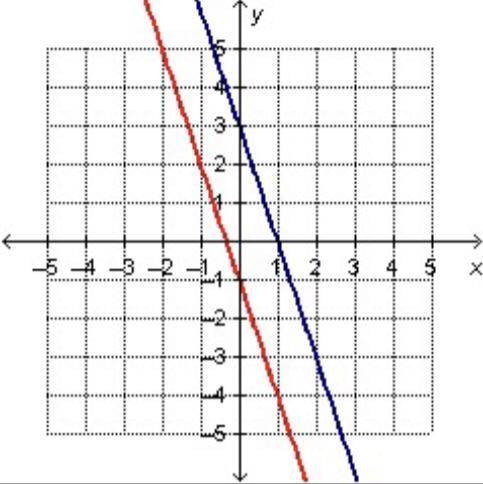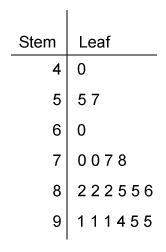Consider the equations and graph below.
y = -3 (x - 1)
y = -3x - 1
Which explains...

Mathematics, 20.01.2021 03:10 miya9946
Consider the equations and graph below.
y = -3 (x - 1)
y = -3x - 1
Which explains why this system has no solution?
Each has a slope of –3 and a y-intercept of –1, which makes the lines parallel.
Each has a slope of –3 and a y-intercept of –1, which makes the lines equivalent.
Each has a slope of –3, but one has a y-intercept of 3 and the other has a y-intercept of –1, which makes the lines parallel.
Each has a slope of –3, but one has a y-intercept of 3 and the other has a y-intercept of –1, which makes the lines equivalent.


Answers: 1
Another question on Mathematics

Mathematics, 21.06.2019 16:00
What are the related frequencies to the nearest hundredth of the columns of the two way table? group 1: a-102 b-34group 2: a-18 b-14edited: i don’t have all day to be waiting for an answer. i figured it out.
Answers: 2

Mathematics, 21.06.2019 18:30
What is the value of x in the following equation? -3x-2=2x+8
Answers: 1

Mathematics, 21.06.2019 19:20
Find the area of an equilateral triangle with a side of 6 inches
Answers: 2

Mathematics, 21.06.2019 20:00
What is the radical expression that is equivalent to the expression 27 1 over 5?
Answers: 3
You know the right answer?
Questions


Computers and Technology, 15.04.2020 20:53


Mathematics, 15.04.2020 20:53


Social Studies, 15.04.2020 20:53

Mathematics, 15.04.2020 20:53






Biology, 15.04.2020 20:53

Computers and Technology, 15.04.2020 20:53









